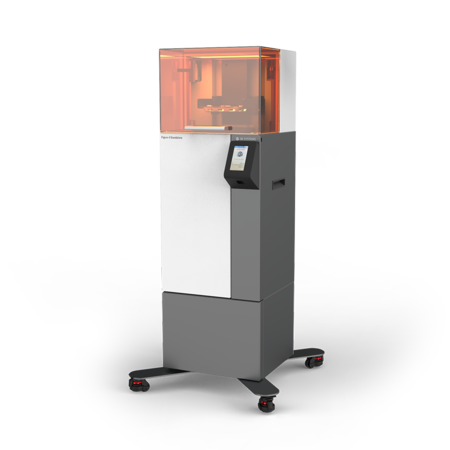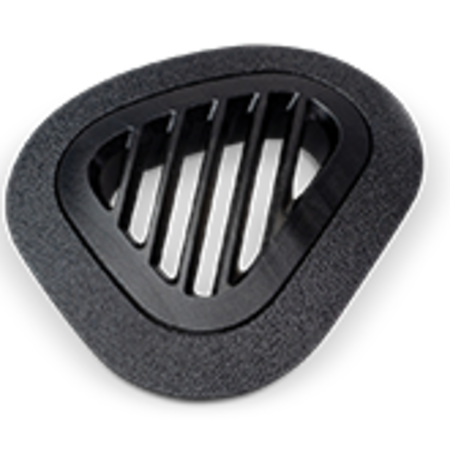Challenge
Achieve intricate mechanical parts quickly that hold up under testing to qualify parts earlier.
Solution
3D Systems’ Figure 4 Standalone printer and PRO-BLK 10 materials for fast access to robust and detailed parts.
Results
- Design validation time reduced from three weeks to same-day;
- Durable PRO-BLK 10 material can be sewn directly onto shoes for testing;
- Ability to better predict final part performance through ongoing comparisons between Figure 4 prototypes and production parts.
Whether they realize it or not, over half of the cyclists in the Tour de France rely on the BOA® Fit System as they churn out mile after mile on the course. BOA is also the common thread that connects workwear, medical bracing, and sports like golf, snowboarding, and trail running – as each integrates BOA’s patented three-part fit system into high-performance products, keeping workers and athletes dialed in.
The BOA Fit System is incorporated into the products of market-leading brands across industries that partner with BOA to give their users the best in performance. Available in a range of power levels designed to match the intensity of the sport and closure force needed for the product, BOA’s performance systems are designed to deliver a fast, effortless, precision fit.
The hunt for functional 3D printed materials
One of the main components of the BOA Fit System is the dial. The dials are engineered to three different power levels depending on the lace tensions achieved by the gear they are fitted to. This includes the high power snowboard dials with gear reductions for high torque that launched BOA’s success in 2001. Daniel Hipwood is a senior design engineer at BOA who spends his time working out the mechanical design for these products.
BOA has been using 3D printing to prototype for several years now, but according to Hipwood, it has been difficult to match BOA’s applications with the material performance they need. Because BOA’s products are small and mechanical properties are paramount, many 3D printing materials could only help BOA with concept verification and aesthetics.
“We’ve been really hamstrung by the materials available to us,” says Hipwood, explaining that the parts BOA was printing were turning brittle and not holding up over time. “We’d have a concept and three days later, if the part fell off a desk in a meeting, it would just shatter into a million pieces. It’s been a real challenge to find thermoplastic-like performance at the resolutions we need, and to actually 3D print parts that function at our scale and can still hold those properties.”
Although BOA’s workflow will still include small runs of pre-production injection molded parts for the foreseeable future, the company wanted to close the gap between 3D printed part durability and final injection molded parts so it could push its designs further, faster, and with greater confidence before beginning the tooling process. Its research led BOA to 3D Systems’ Figure 4 technology and materials.
Taking testing farther with Figure 4
Figure 4 is a projection-based additive manufacturing technology that uses a non-contact membrane to combine accuracy and amazing detail fidelity with ultra-fast print speeds. Together with 3D Systems’ production-grade Figure 4 materials, BOA is able to use the Figure 4® Standalone to get early insights into production part performance. Rather than wait the typical three weeks for machined parts, BOA can now assess the viability of its designs in the same afternoon using Figure 4.
BOA uses several of 3D Systems’ Figure 4 materials, and is particularly fond of Figure 4® PRO-BLK 10. Unlike other additive materials BOA has tried in the past, this high precision, production-grade material has long-term environmental stability and thermoplastic-like behavior. This has proved highly beneficial and answered BOA’s search for a material that would deliver resolution and performance with the ability to hold its properties. The material is working exceedingly well for BOA’s purposes, and the company is conducting ongoing correlation tests between final production parts and Figure 4 parts to understand the threshold performance requirements it needs before moving on to production. “Sometimes it’s actually one-to-one, so they’re performing the same as our injection molded components,” says Hipwood.
As part of product development, BOA likes to take viable prototypes and get them on shoes early into the design process so testers can interact with them. Even for designs that will not go on to final production, attaching dials to shoes and putting them through routine abuse helps BOA gather design and performance data on what works and what doesn’t. This aspect of testing requires the dials to be sewn directly into fabric without molded holes. According to Hipwood, finding conventional plastics that can be stitched is difficult enough, let alone finding a UV cured material that will perform without cracking. “Punching a needle through plastic is a toughness problem. You need a material that is resilient, but still maintains enough stiffness to carry out its other uses. Part count reduction is key, so that stitched component may have other important functions that require a stiff plastic material,” says Hipwood. The fact that Figure 4 PRO-BLK 10 can be used to prototype in this manner has been a major help to BOA, saving time and money to quickly iterate its designs for the highest performance.
Along with its fit system, BOA is known for its lifetime warranty: The BOA Guarantee. Product quality out of the gate is paramount and having functional printed parts helps Hipwood and the team of engineers at BOA deliver new innovative products with faster design cycles and less redesign of components after tooling creation. “Everyone is striving to shrink and optimize their products, which makes it critical to identify the weak spots as early in the design process as possible to avoid finding problems when molds have already been created.”
Additional materials in use at BOA include Figure 4® TOUGH-GRY 15, a durable gray prototyping material, and Figure 4® ELAST-BLK 10, an elastomeric prototyping material. Beyond the small mechanical parts inside the lacing dial systems, BOA uses the Figure 4 Standalone to print aesthetic proofs of concept, end-use fixturing, and rubber-grip overmolds.
A track record of success
According to Hipwood, BOA’s decision to invest in 3D Systems’ technology was twofold. The first factor was BOA’s positive experience talking with the 3D Systems team, and the level of support and expertise 3D Systems demonstrated. The second factor was 3D Systems’ track record. As the originator of the 3D printing industry with an established and robust portfolio, BOA was confident in the longevity of its investment if it worked with 3D Systems. “Other options we explored felt kind of like an alpha or beta product that wasn’t quite tested,” says Hipwood. 3D Systems’ clear focus on innovation and advancing the state of additive manufacturing made the company stand out.
BOA is happy with its decision to bring Figure 4 onboard. “There are more than a few people here who can speak to how the printer is helping them validate their work,” says Hipwood.


